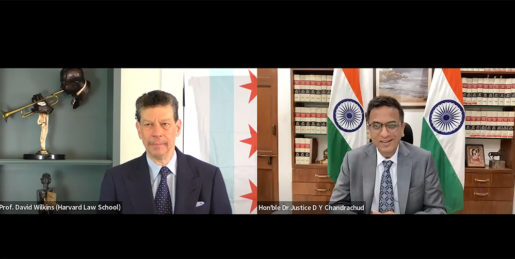In “The Evolving Global Supply Chain for Legal Services,” which appears in the larger volume The Indian Legal Profession in the Age of Globalization (Cambridge University Press, 2017), Vikramaditya Khanna examines how the developing and increasingly global supply chain for legal services, including the emergence of legal process outsourcing (LPO) to countries like India, impacts the employment of lawyers in the United States. In the article, Khanna examines both outsourcing in the legal profession and factors that have driven the growth of the LPO industry as well as the implications of LPO growth on the employment of U.S. lawyers. Below, we summarize three takeaways from Khanna’s research.
Not only are new options emerging from regions such as Latin America, Africa, and East Asia but clients of LPO are emerging from new countries as well, such as Germany, Japan, China, and elsewhere.
“LPO to India” increasingly encompasses more services and is impacting many countries beyond just India and the United States. LPO to India, which Khanna defines as an entity “sending law-related work or tasks to a non-law-firm entity in India for completion,” is often a cost-benefit calculation for clients. Some of this work is administrative back-office tasks like transcription or brief editing, but LPO work increasingly includes more-complex tasks in compliance, litigation support, intellectual property, legal research, and what Khanna calls “process engineering,” which may be related to trends in the current marketplace around managed services. (For more on managed services in law, see “Managing to Deliver?.”)
India has been the LPO country of choice for many clients—generally law firms, corporate clients, or individual practitioners from the United States or Europe—for reasons stretching from its wealth of English-speaking lawyers to its already-established experience handling LPO work to its specific geographic location (which, as Khanna points out, allows for a truly 24-hour workday). This preference for explicitly Indian LPO is not static, however, and Khanna explains that not only are new options emerging from regions such as Latin America, Africa, and East Asia but clients of LPO are emerging from new countries as well, such as Germany, Japan, China, and elsewhere. In short, the future geography of LPO is anything but fixed.
The way this impacts U.S. lawyers is complicated. “In particular, [LPO to India’s] effects cut in multiple directions,” writes Khanna. This double-edged sword extends to the amount of legal work done in the United States, the distribution of work among senior and junior lawyers, and the compensation for U.S. lawyers. Instead of finding a straightforward link between the emergence of LPO options in India and lawyers’ experiences in the United States, Khanna describes a much more convoluted picture. Indeed, while discrete tasks may be displaced by LPO, there is potentially other work that becomes available to those lawyers with that added bandwidth. And while the outlook of legal work displacement via LPO may appear somewhat bleaker for junior rather than senior lawyers in the United States, plausible increases in demand could very well negate such effects. That demand variable can likewise determine whether salaries decrease or even increase for U.S. lawyers. Khanna writes, “The net impact is thus ambiguous in the abstract, depends on a number of factors, and is likely to vary with the area of law and the seniority of the attorney.”
The competitive landscape of legal services is shifting.
Effects on the employment of U.S. lawyers is only one consequence of LPO to India among broader, potentially longer-lasting effects. Khanna also considers two profession-wide effects outside the bounds of the employment of lawyers in the United States—what he calls the increasing atomization of the market for legal services and a possible restructuring of that market. In the context of atomization, Khanna asks how many more suppliers of legal services unbundling is likely to entail. In asking this question, his point is less about how to break a project up into 20 discrete tasks and more about how many new providers would split the work of those 20 tasks—whether they are law firms, LPO providers, or others. Increased atomization in such a scenario could be beneficial to clients in reducing reliance on any one provider (and thus reducing risk) and driving greater competition (and thus lowering costs). What Khanna finds, however, is that clients appear to be largely reluctant to diversify their LPO providers. “Rather,” Khanna writes, “customers hire either one LPO firm or a small number of LPO firms … when it is clear that there could be greater atomization.” This points to clients’ preference for developing a relatively small number of deep relationships with LPO providers. As Khanna notes, this dynamic appears to mirror the one between corporate legal departments and their preferred law firms. (For more on this dynamic, see the Harvard Law School Center on the Legal Profession’s Corporate Purchasing Project, which, among its findings, highlights the importance of “relationships” in the purchasing of legal services.)
Khanna also observes possible changes to come in both the size of legal service providers and how they compete—law firms and “alternative” providers alike. Broadly, he explains, these changes are likely to reduce the overall size of providers. For law firms, for example, the emergence of LPOs may provide incentive to hire fewer new associates just as it may incentivize partners to break off and establish more individually profitable practices. The competitive landscape of legal services is shifting as well, Khanna notes, as the dynamic between law firms and LPOs is multidimensional, characterized by instances of both competition and collaboration (see “Everyone’s a Law Company”). This creates new wrinkles in the market for legal services where clients might increasingly choose between different sizes and combinations of providers, such as considering a large firm versus a smaller firm augmented with LPO services.
The events in motion are likely to have, as he points out, significant consequences for the future of the market for legal services.
Through his close examination of the evolving global supply chain for legal services, Khanna reveals something of a tangled web. The events in motion are likely to have, as he points out, significant consequences for the future of the market for legal services. Indeed, while LPO to India and elsewhere is not a new phenomenon, we may just now be experiencing its longer-term effects as ever-more specialized and purportedly cost-effective options materialize in the market. The question with which Khanna leaves his readers is the same question we grapple with today: How will the legal profession respond to these changes?



